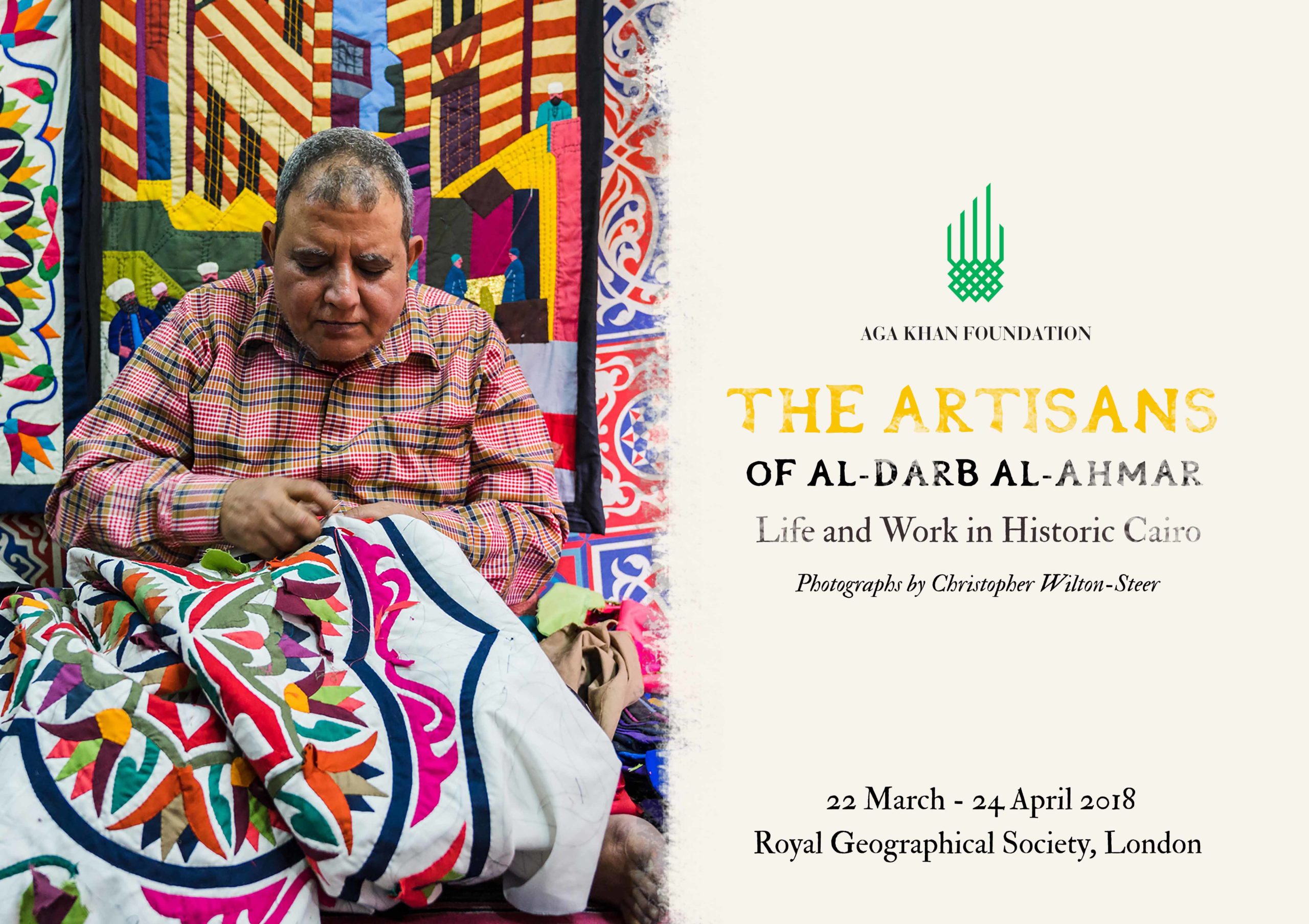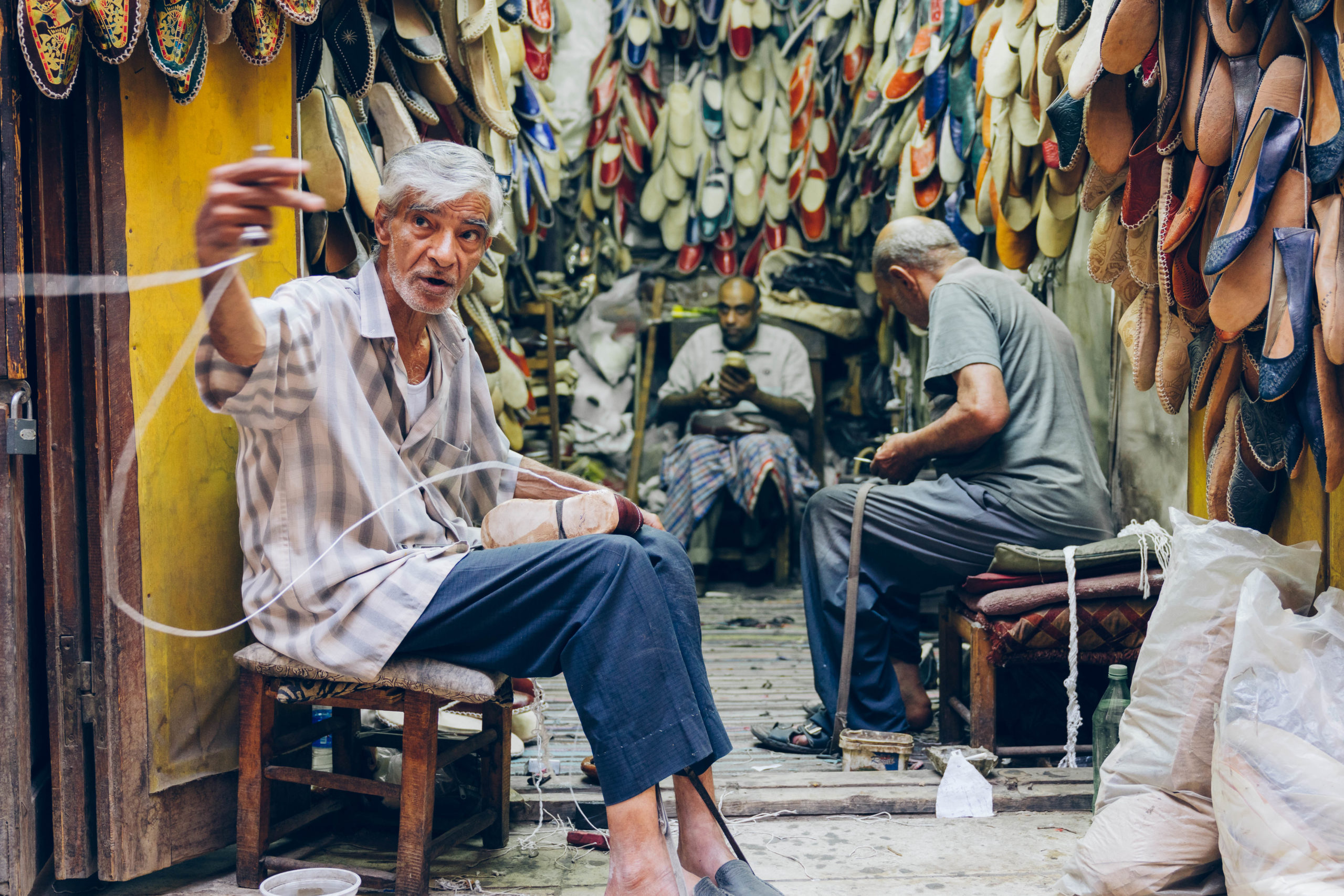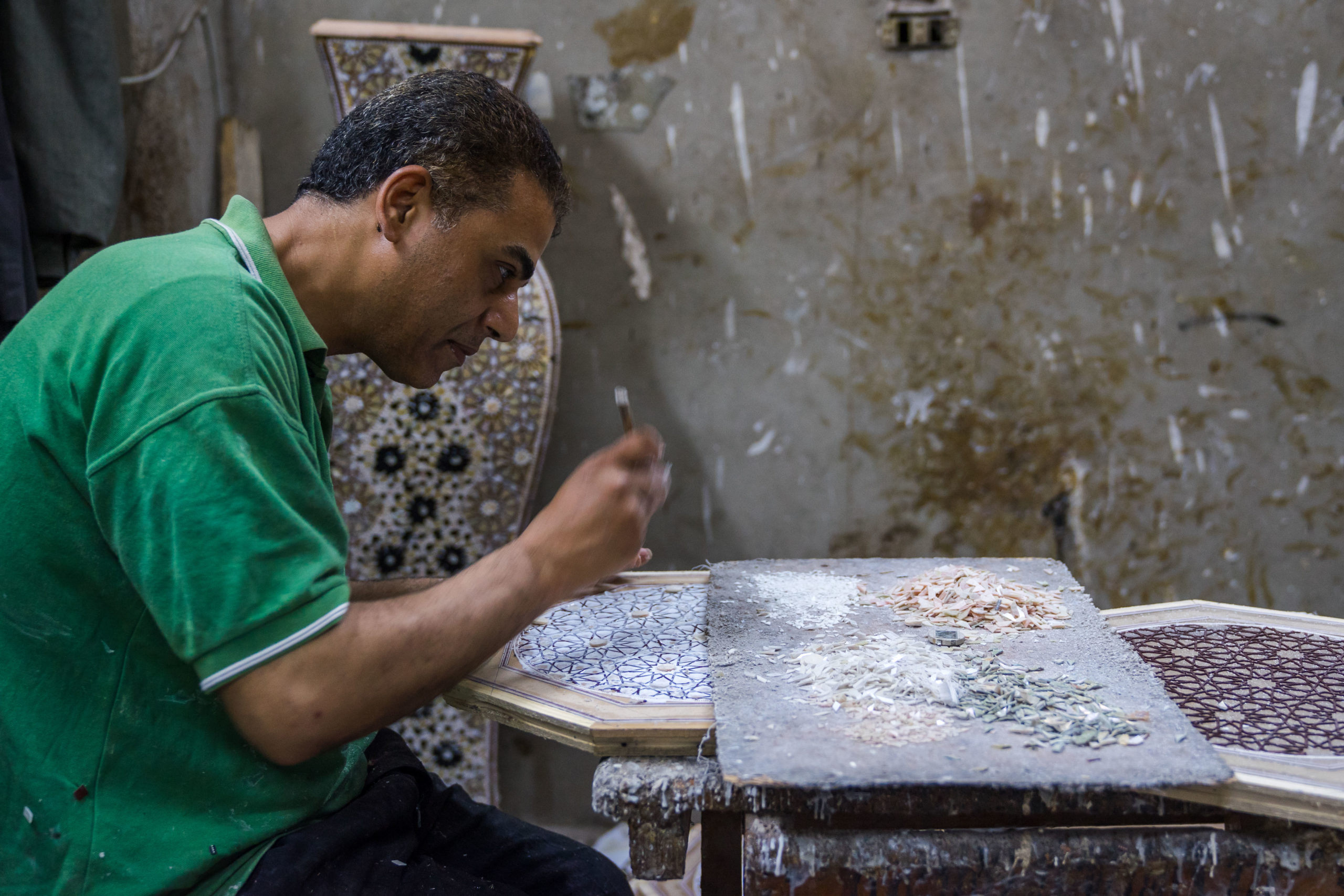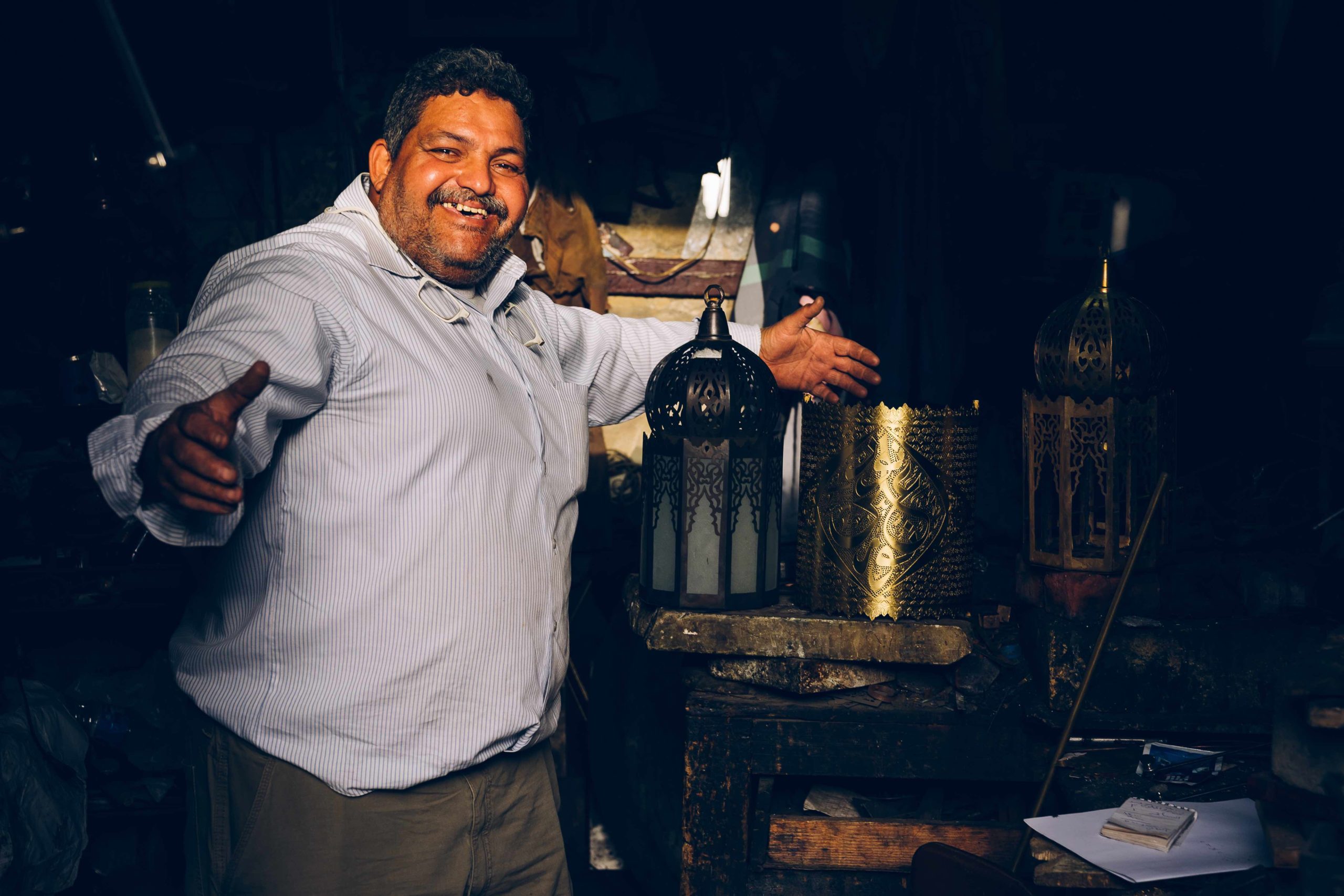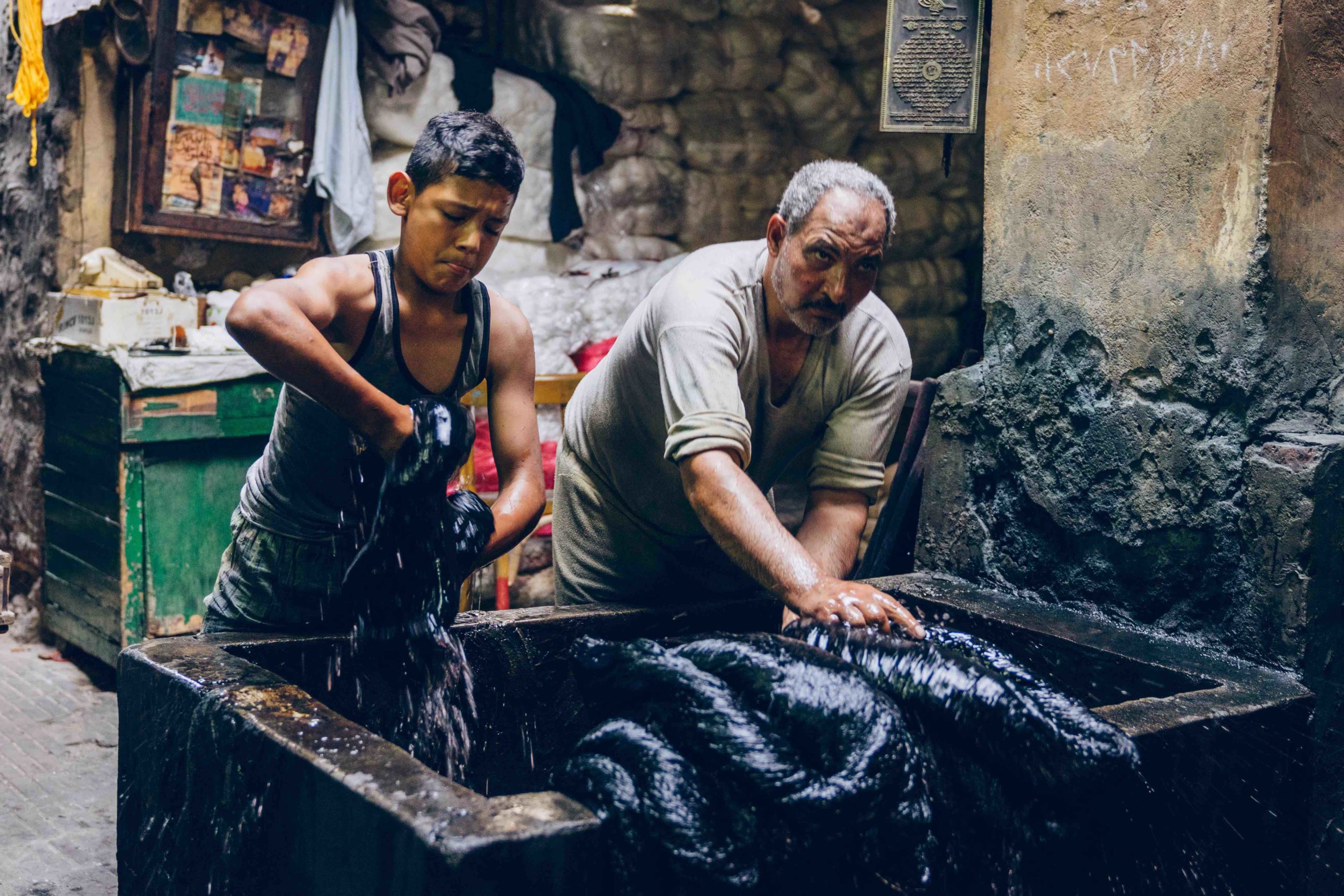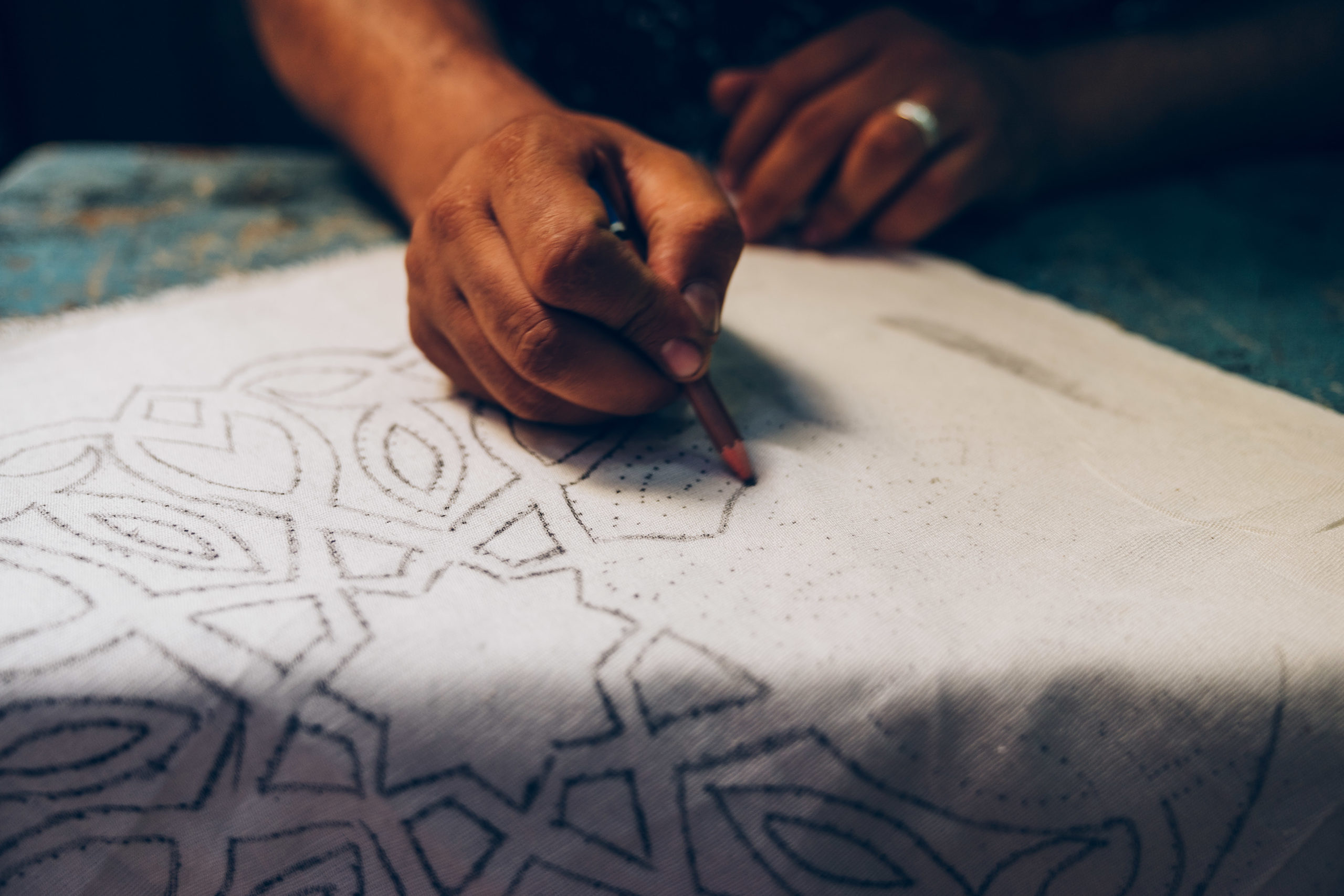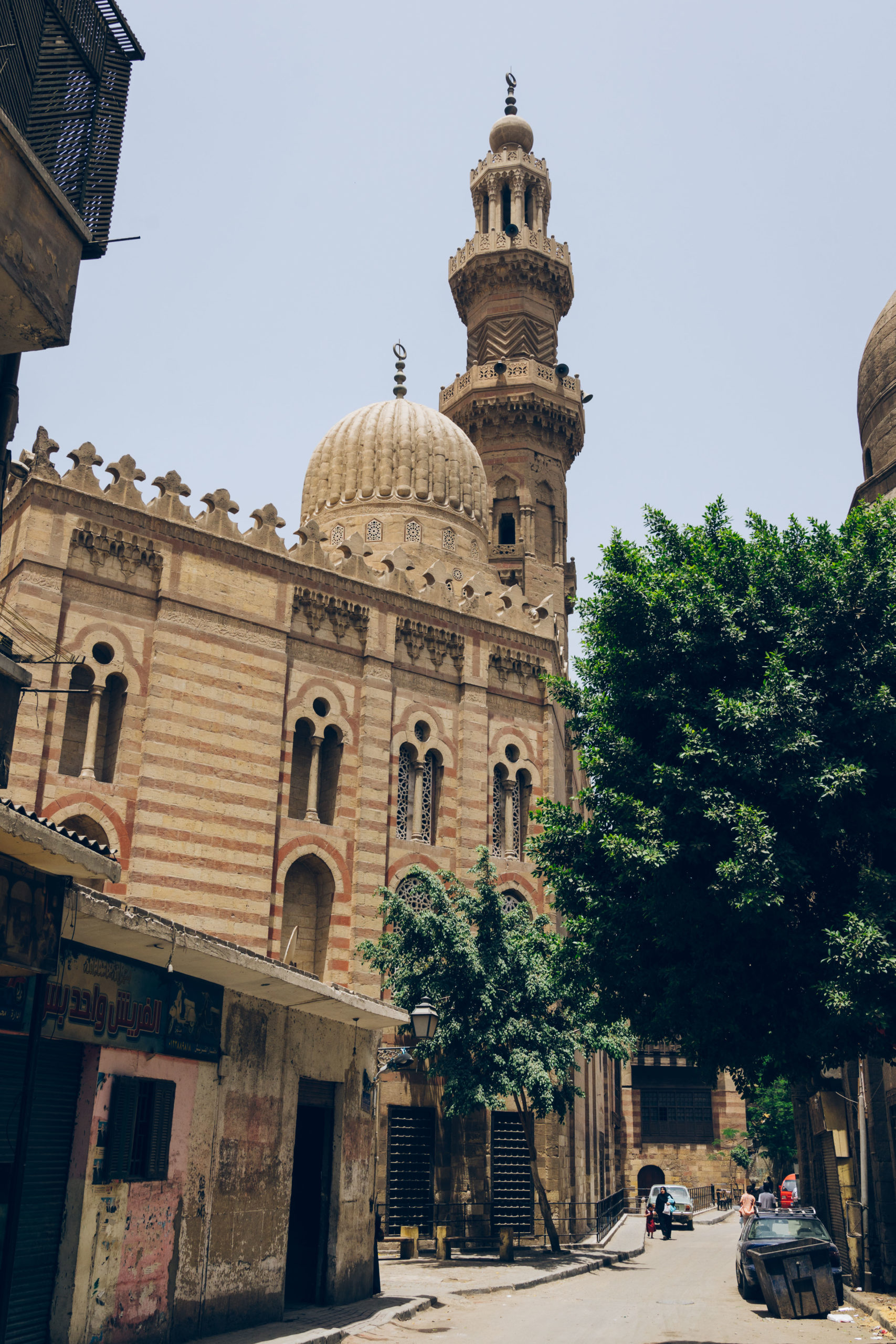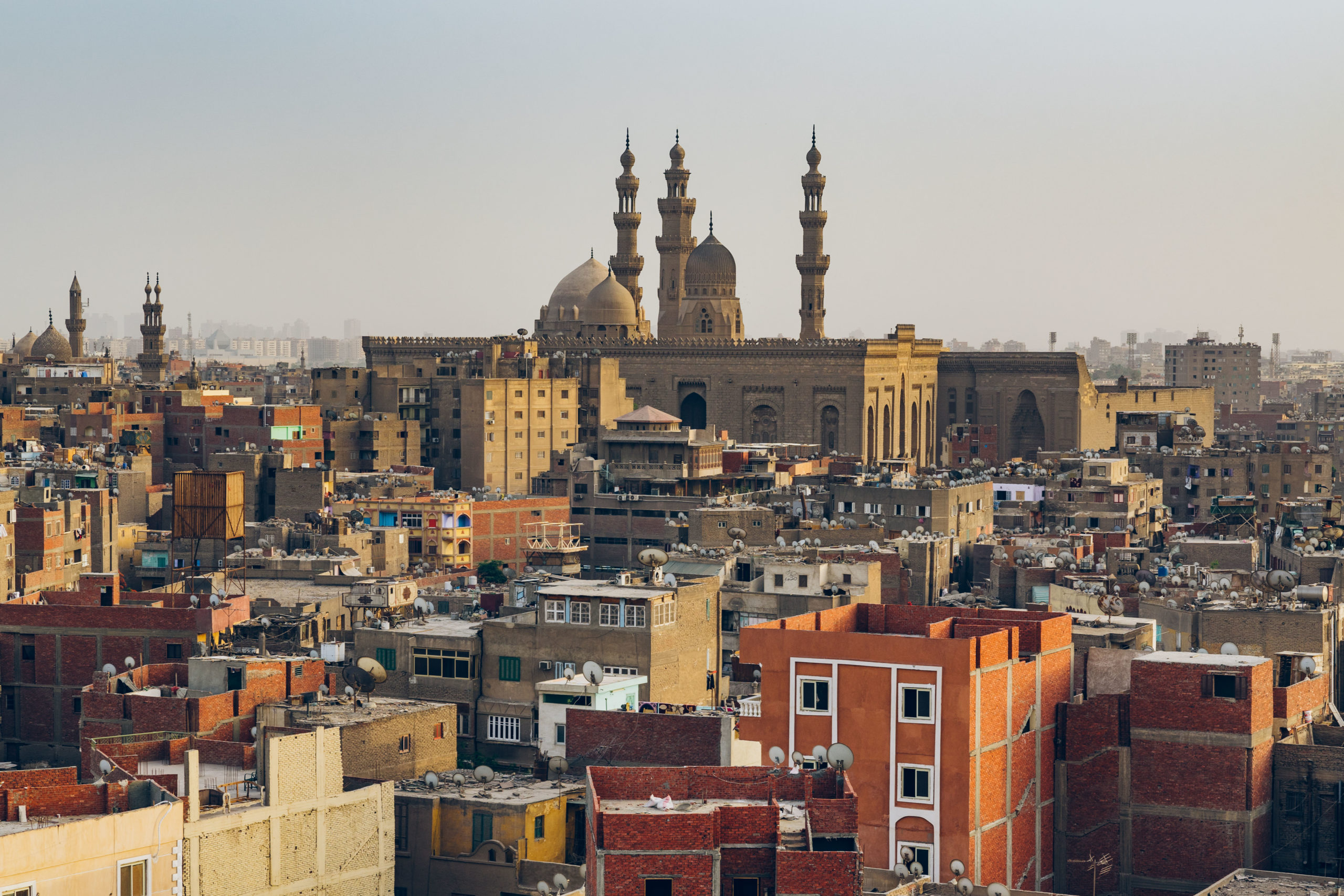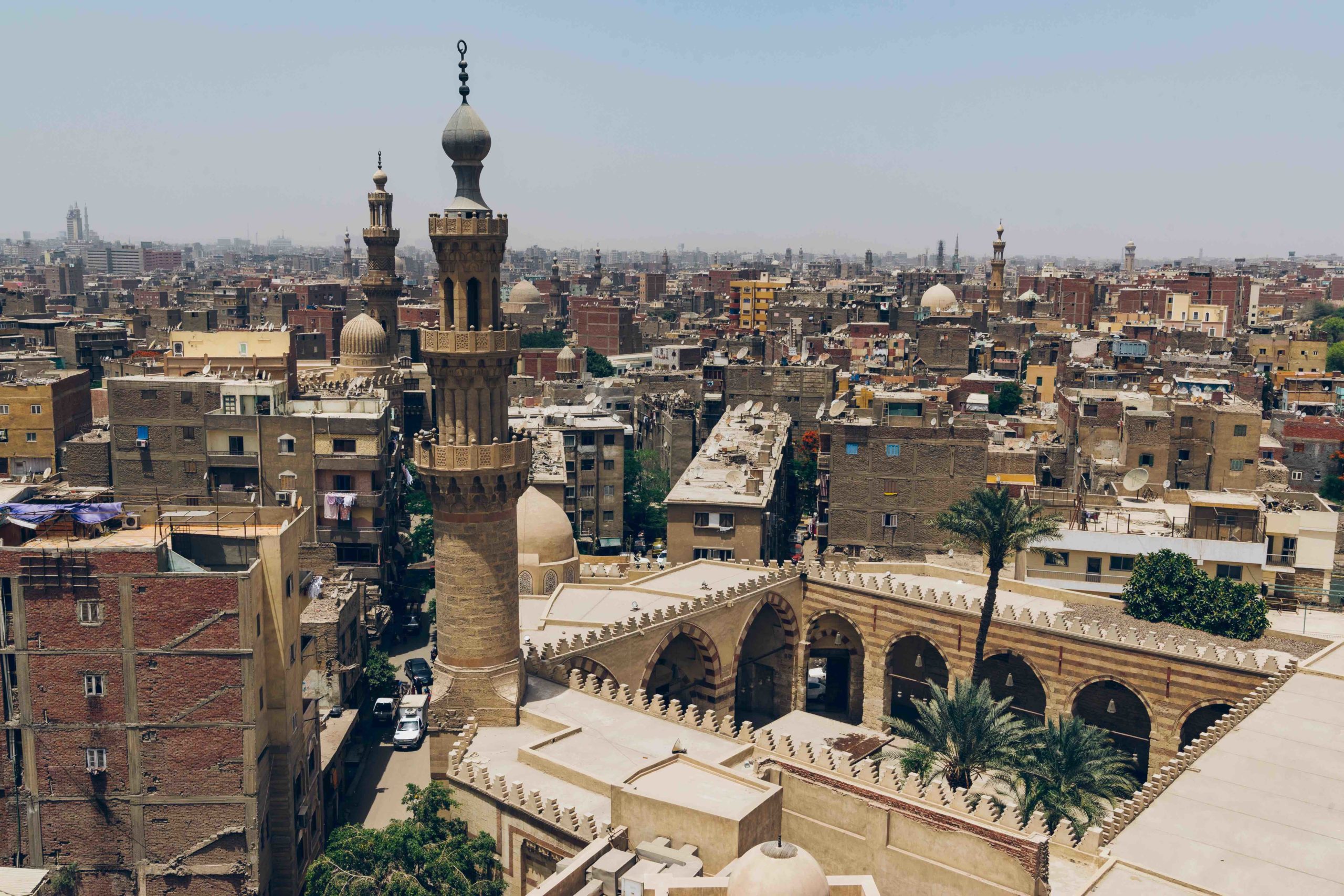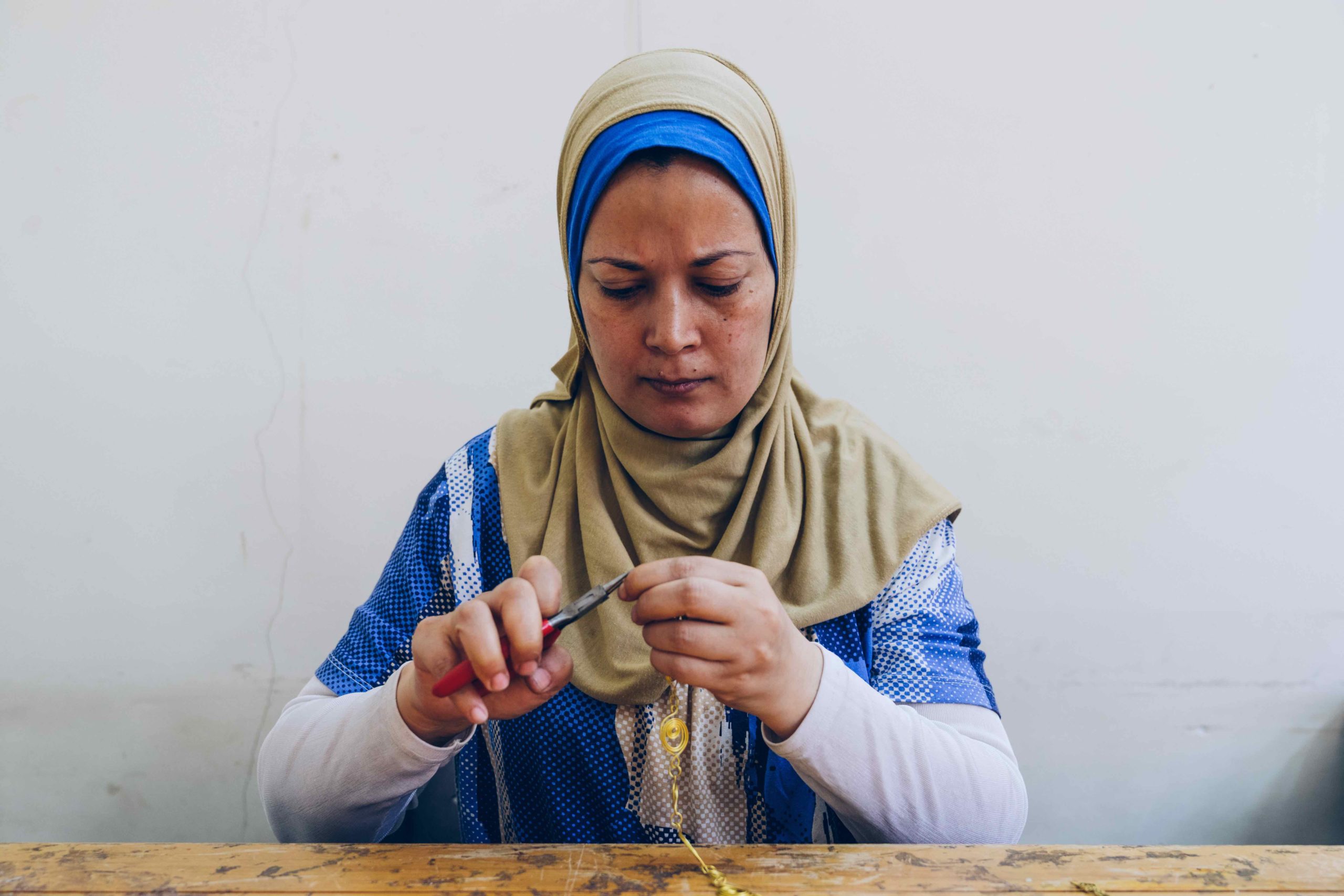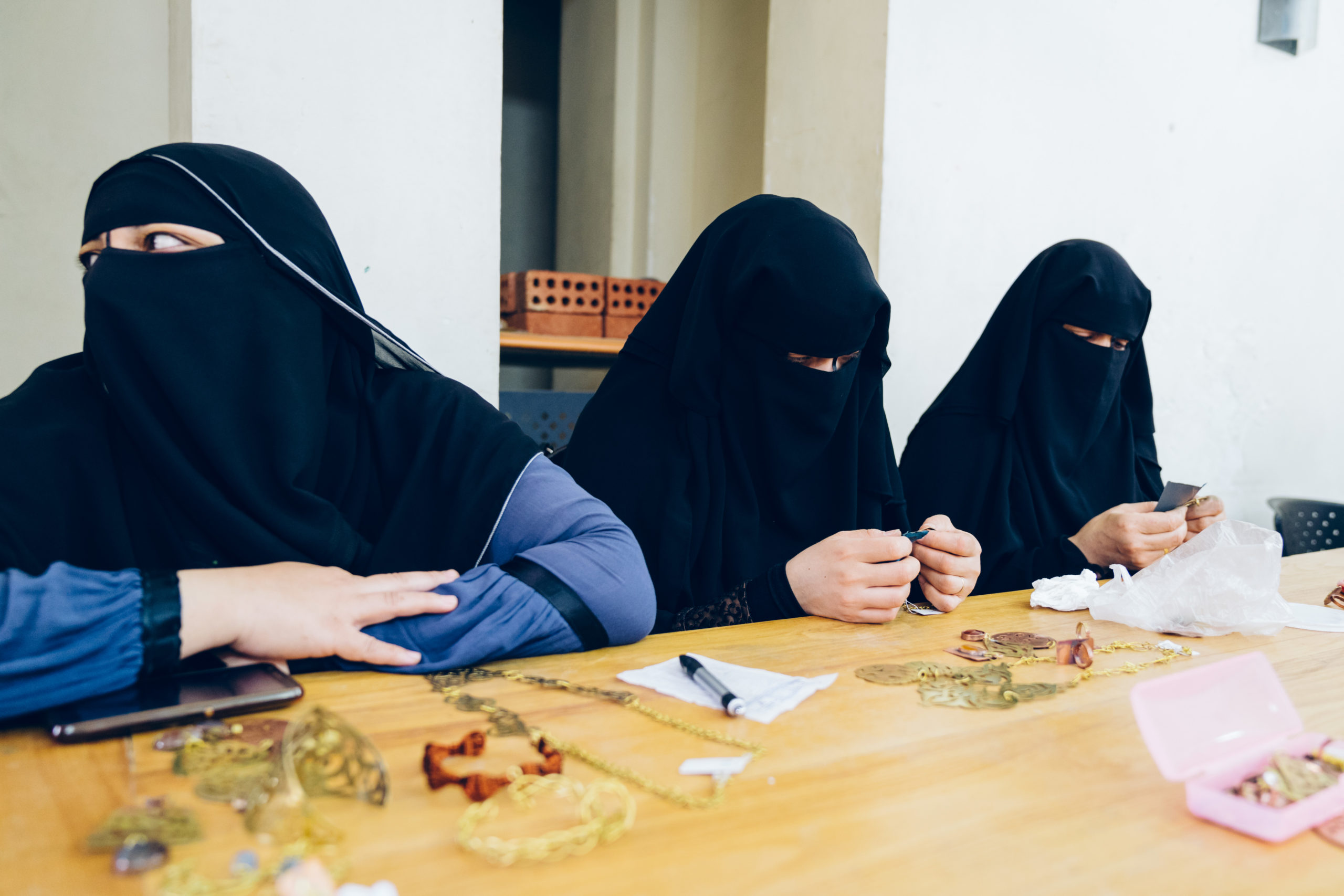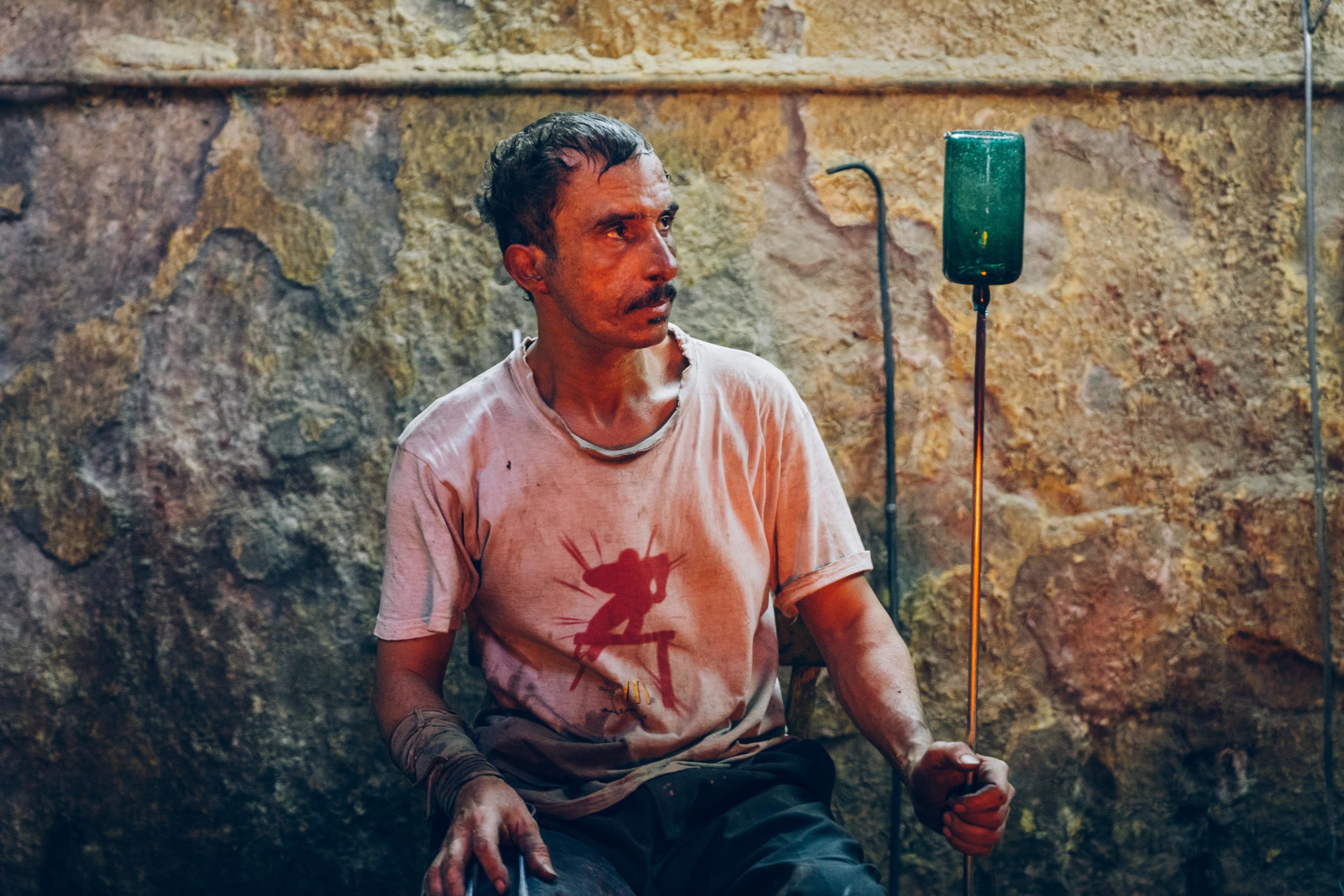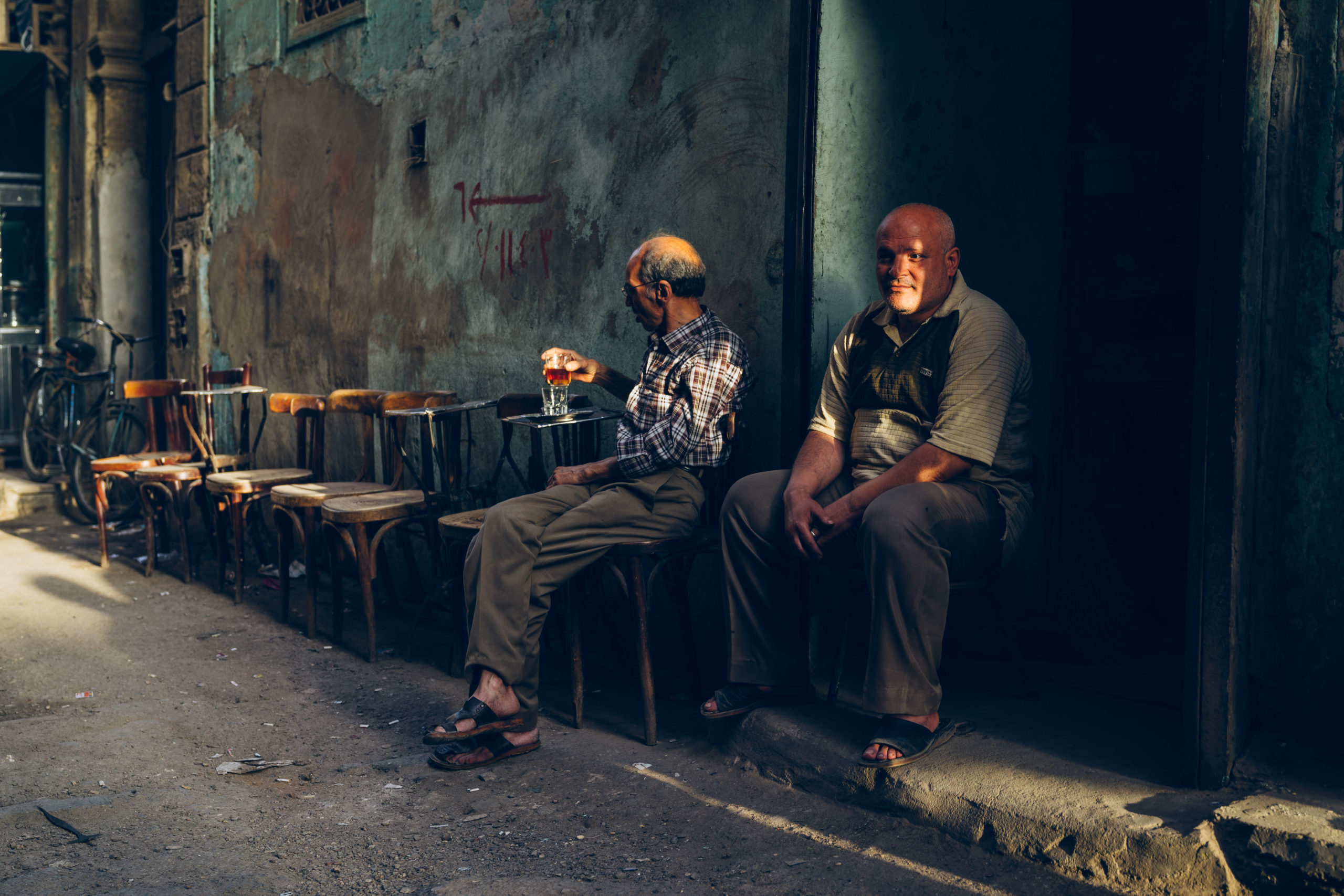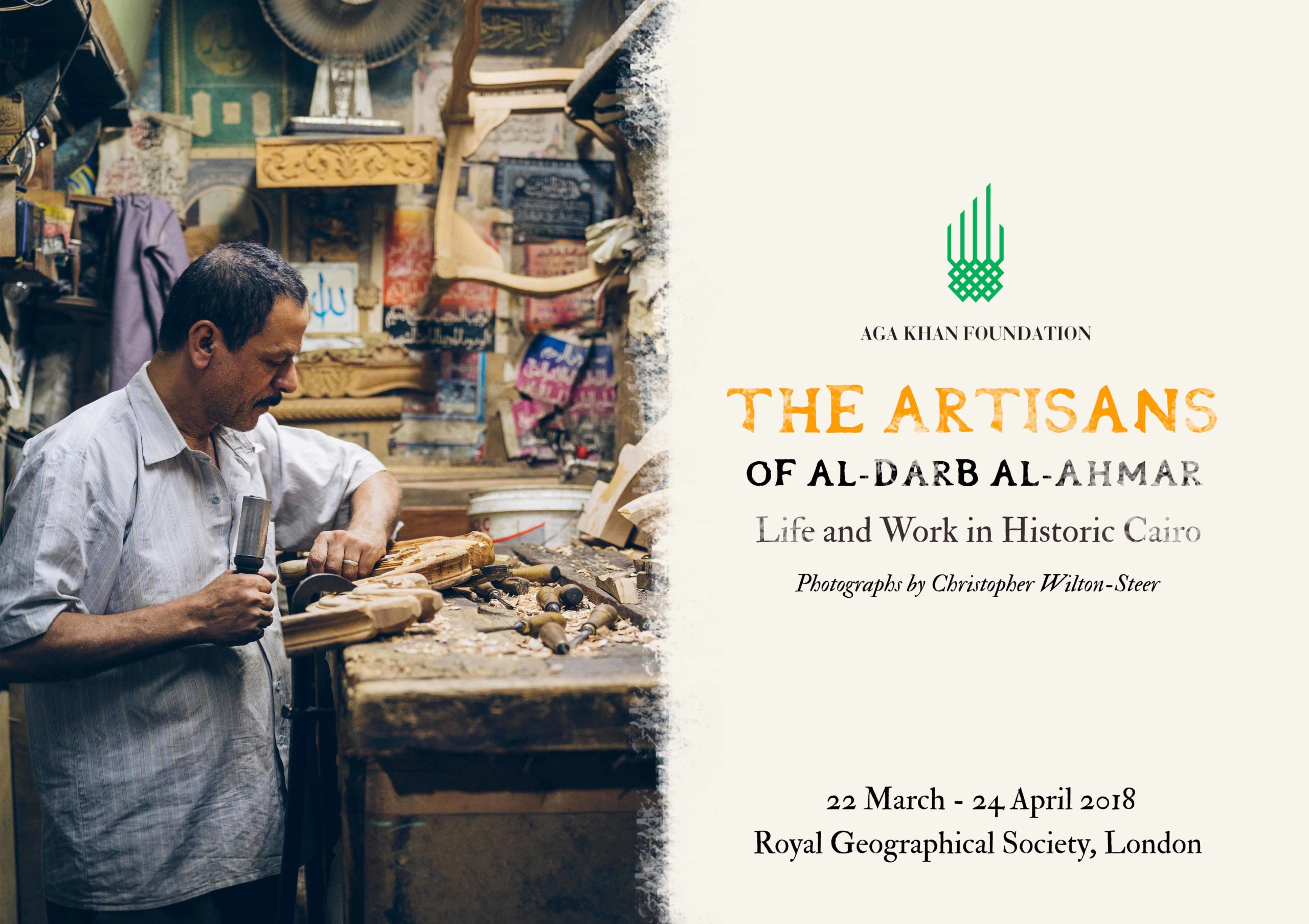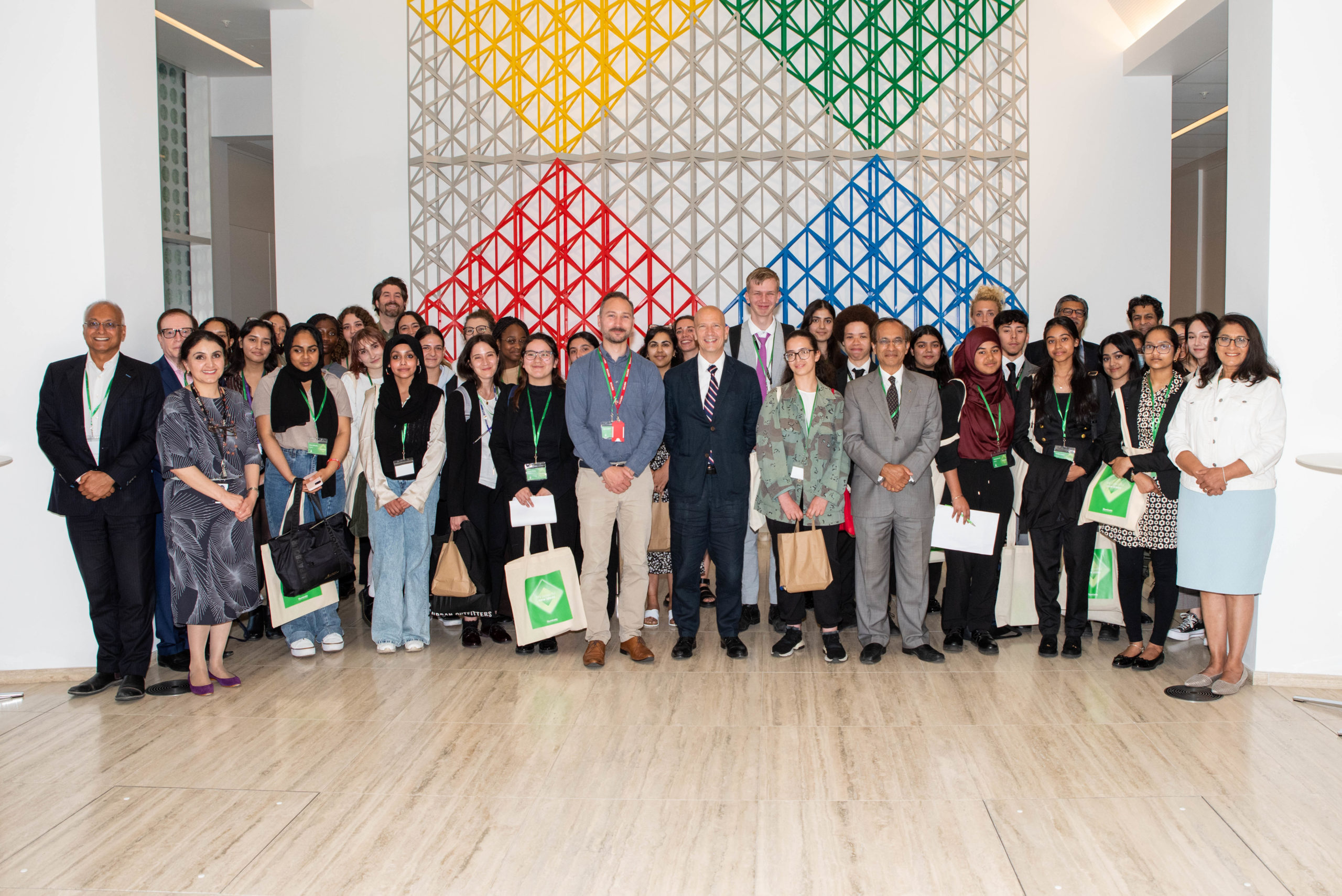In 969 CE the Fatimid dynasty entered Egypt and founded the city of al-Qahira (‘the Victorious’). Today we know it as Cairo. Over the next 1,000 years, successive Ayyubid, Mamluk and Ottoman eras followed, leaving glories of Islamic architecture and an ever-growing metropolis in their wake.
Next to the Fatimid city emerged the neighbourhood of al-Darb al-Ahmar, a part of what is known today as ‘Historic Cairo.’ The district, a maze of narrow and winding alleyways dotted with medieval mosques, connects visitors with a past and a way of life that remains in very few places in the world today. Around 350,000 people live in al-Darb al-Ahmar, inhabiting old Mamluk-era houses, Ottoman mercantile quarters, and teetering unregulated apartment blocks. When walking through the district, one might in turn encounter a wedding procession, children playing football, or a horse-drawn cart delivering planks of wood to a carpenter.
The neighbourhood is said to be home to 1,000 artisanal workshops. The artisan’s manual energy is on full display along the streets, where they can be seen carving, sewing, welding, and hammering. The sound of their exertions fills the air. A huge array of crafts are made here – from brass lanterns, colourful textiles, and glassware, to silk carpets and furniture inlaid with mother-of-pearl. The designs are often unique to Cairo and, in some cases, to the district itself. It is an astonishing creative output.
The work requires great skill and is physically demanding. It is hard work. But based on many conversations with the neighbourhood’s artisans, there is little doubt that the tangible output is deeply satisfying. In the 21st century it is rare to see such a volume and variety of hand-crafted goods being made from start to finish in full view of the street. Coming from a part of the world that has lost much of its manufacturing heritage, I was captivated by the work of the artisans. I found myself in awe of these bearers of centuries-old knowledge whose craftsmanship offered a rare and precious glimpse into the past.
Due to recent political instability and a shifting external perception of Egypt, however, the future of many of these crafts is under threat. The number of tourists visiting Egypt halved between 2011 and 2016, while the cost of raw materials such as wood and brass has increased. In the absence of a vibrant market, tourist or otherwise, many of these crafts – some of which are part of traditions going back a thousand years – may not last another generation. The loss of this rich cultural heritage would be significant – the world and Egypt would surely be poorer because of it.
Efforts are being made by the government and non-government partners – such as the Aga Khan Development Network – as well as passionate individuals to support the artisans of al-Darb al-Ahmar. This series brings attention to those efforts, while it also celebrates the people, culture, and the activity that takes place in this dynamic but fragile quarter of Cairo. These photographs showcase the personalities who make up daily life and attempt to present a side of the city that is not often seen online, on television or in newspapers outside Egypt. Ultimately, I hope that this series will inspire greater interest in al-Darb al-Ahmar and will encourage people to visit this special place – “the soul of Egypt”, as one artisan described it.
The exhibition – ‘The Artisans of al-Darb al-Ahmar: Life and Work in Historic Cairo’ – ran at London’s Royal Geographical Society between 22 March and 24 April 2018. It is currently being exhibited at Philanthropy House in Brussels until 4 February 2019.
Press for The Artisans of al-Darb al-Ahmar
Alive with artisans: Cairo's al-Darb al-Ahmar district - a photo essay
Amid the quarter's busy streets, a thousand workshops maintain centuries-old craftmaking traditions. These workers' ancient skills are celebrated in a new exhibition at London's Royal Geographical Society
Traditionshandwerker in Kairo: Die Letzten ihrer Art - SPIEGEL ONLINE - Panorama
Ein Labyrinth aus engen, verwinkelten Gassen, voller mittelalterlicher islamischer Architektur, gesäumt von beeindruckenden Minaretten: Im Viertel al-Darb al-Ahmar in Kairos Altstadt leben rund 100.000 Menschen. Rund tausend davon sind Kunsthandwerker, die in den belebten historischen Straßen ihrer Arbeit nachgehen. Sie bauen Möbel oder Lampen, binden Bücher oder weben Teppiche.
Meet the artisans of Cairo keeping centuries-old crafts alive
The design world has always celebrated individually crafted items, from elaborately woven textiles to hand-thrown ceramics. In a world where mass production is the norm, the talented and dedicated artisans who still work at centuries-old crafts deserve to be celebrated.
رحلة بصرية بين أزقة مصر الضيقة.. ما الذي سُحر به هذا المصور البريطاني؟
بين الأزقة الضيقة والشوارع العاجقة.. جذبته أحد الأحياء المصرية، التي قد تكون فقيرة اقتصادياً، ولكنها ثرية تاريخياً. وبدوره، قرر المصور البريطاني، كريستوفر ويلتون-ستير، أن يأخذ الأشخاص برحلة بصرية تروي قصصاً قلَّ سردها عن حي درب الأحمر.
Photos: The Cairo artisans saving a thousand years of Egyptian history
Cairo is a historic megacity, home to ancient bazaars, the Great Pyramids of Giza, and one of the world's oldest institutions of higher learning, Al-Azhar University. And tucked in its midst is al-Darb al-Ahmar ('Red Road' in Arabic), a 14th-century quarter that's a maze of narrow, twisting alleyways lined with medieval Islamic architecture and towering minarets.
Meet the British Photographer Who Captured Darb Al Ahmar's Forgotten Craftsmen
In an era where crafts and arts have lost a personal and unique element in the pursuit of mass production and trends, lays an area in Egypt that still retains a classical approach and the spirit of its history when designing and manufacturing its goods - the criminally overlooked and often ignored Al Darb Al Ahmar district, which is the subject of a sprawling new photography exhibition set to go on show between March 22 and April 24 at London's Royal Geographical Society.


